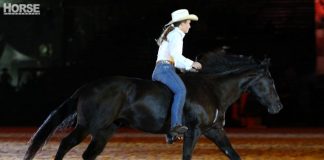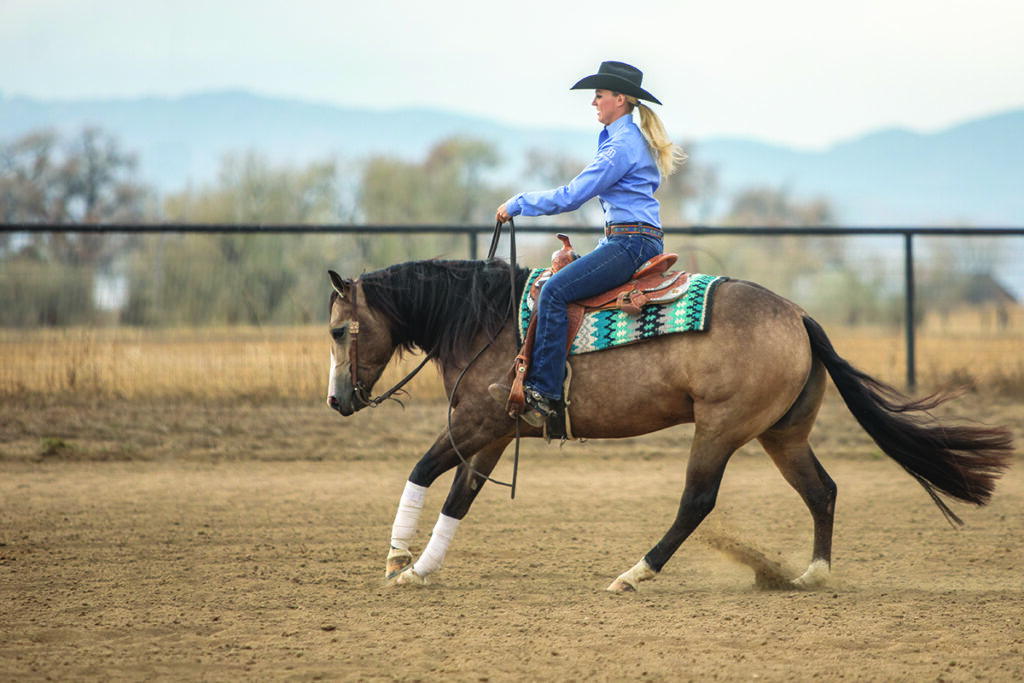
To reach the point in the reining arena where you’ll slide to a stop, you must first build up speed and guide your horse in the rundown. But what happens when your horse thinks that heading straight across the arena means that he should bolt forward? If your horse speeds up on his own, you’ll lose points on the reining maneuver that combines the rundown, the stop, and the rollback.
What makes horses speed ahead on their own? Schwartzenberger says many horses get excited about the big sliding stop finish and want to get there faster. Instead, Schwartzenberger wants to train her horses to listen to her every cue and only speed up on command.
The Practice Loop
Instead of practicing rundown after rundown, Schwartzenberger warms up her horse, then practices rundowns while riding in a large oval, using the longest portions of the arena and riding in a continuous loop. Starting in the middle of the arena, she rides to the end and picks up the left lead as she tracks left.
She picks a straight line for her rundown then gradually builds up speed. When she reaches the opposite end of the arena, she doesn’t go for the big stop. Instead, she simply slows her horse and rides back to repeat the oval.
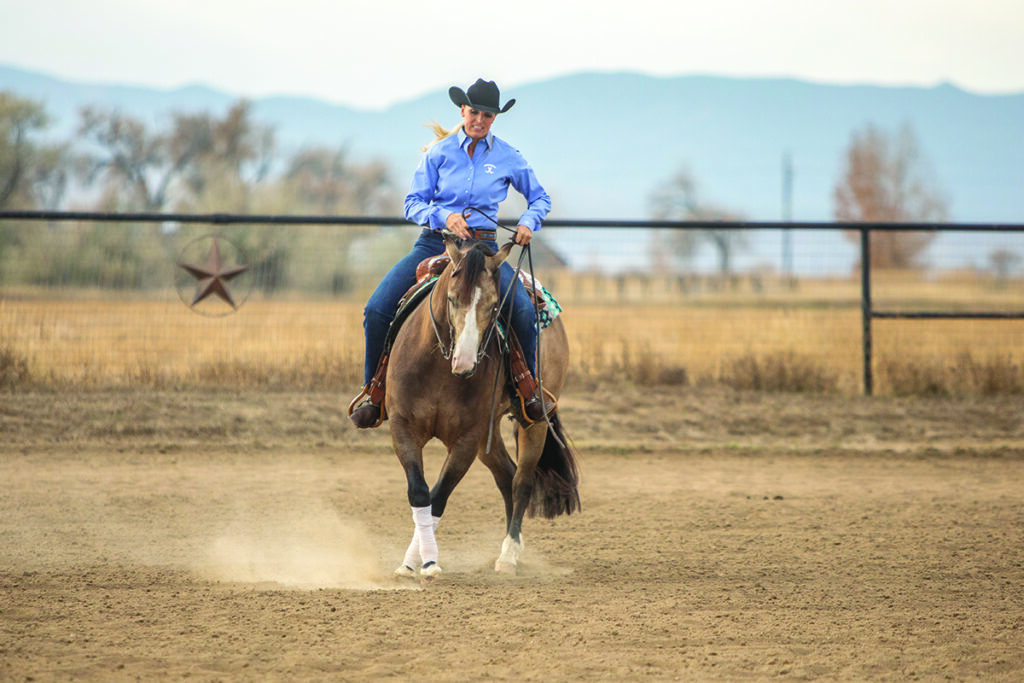
If her horse changes speed on his own and zooms forward, she says “whoa” and calmly and slowly pulls back on the reins to stop him from moving ahead to the location where he thinks he should stop. After stopping him short, she guides him in a spin or two, turns him right and left in a serpentine pattern, then picks up a lope again to ride the longest oval the arena will allow.
A Listening Mount
Schwartzenberger reminds you not to angrily correct your horse, but simply remind him that you can cue for any maneuver at any time. He needs to check in and listen to your aids instead of anticipating.
“You want the horse to switch and listen to you instead of doing his own thing,” she says. “Change up the drill so that the horse will listen to you for the cue. You want to be slow with your commands, not jerking.”
When you cue your horse for an early stop to end the bolt, first say “whoa” so that you don’t shock him with the change. Then remove your legs from his sides and pull up and back gently to “draw him to the ground.”
“I don’t want to catch a horse off guard or get him scared when I stop,” Schwartzenberger says. “The softer you are with your hands, the more the horse will soften in response. If you pull back harshly in a correction mode, the horse will be tense and throw his head in the air. That will affect your good sliding stops later. Move slowly.”
Adding Back Speed
Schwartzenberger says she’ll slow or stop the horse and then turn in a new direction every time he tries to bolt. Once a horse becomes hesitant and waits for a cue to speed up, she’ll gradually add speed.
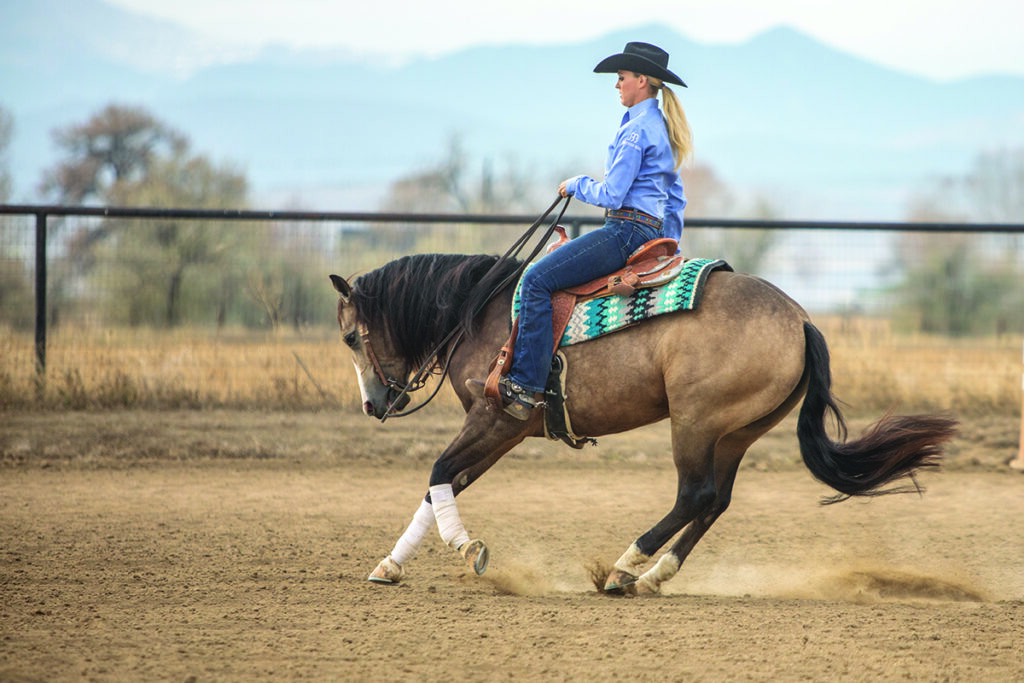
“Eventually, I’ll start asking my horse to build speed,” she says. “When you ask him to lope straight across the arena, you’ll feel him reach the point where he used to blast off, then he’ll almost hesitate like he’s thinking, ‘I don’t want to blast off, I know I’ll get stopped for that.’ That hesitation is what you want. You want your horse to be tuned in to you and only go faster when you ask for it.”
Ride in your oval pattern to help your horse tune in to you without anticipating the sliding stop. You’ll gain control and learn when and where in the rundown you want to ask your horse to move faster. You’ll also have more confidence when you know you are in control.
Ready for Sliding Stops
Soon you’ll be ready to practice the rundown with the stop at the end.
“You want your rundown to be smooth—just like an airplane taking off,” Schwartzenberger says. “You want a smooth gain of speed and to hit your max speed just before you say ‘whoa’.”
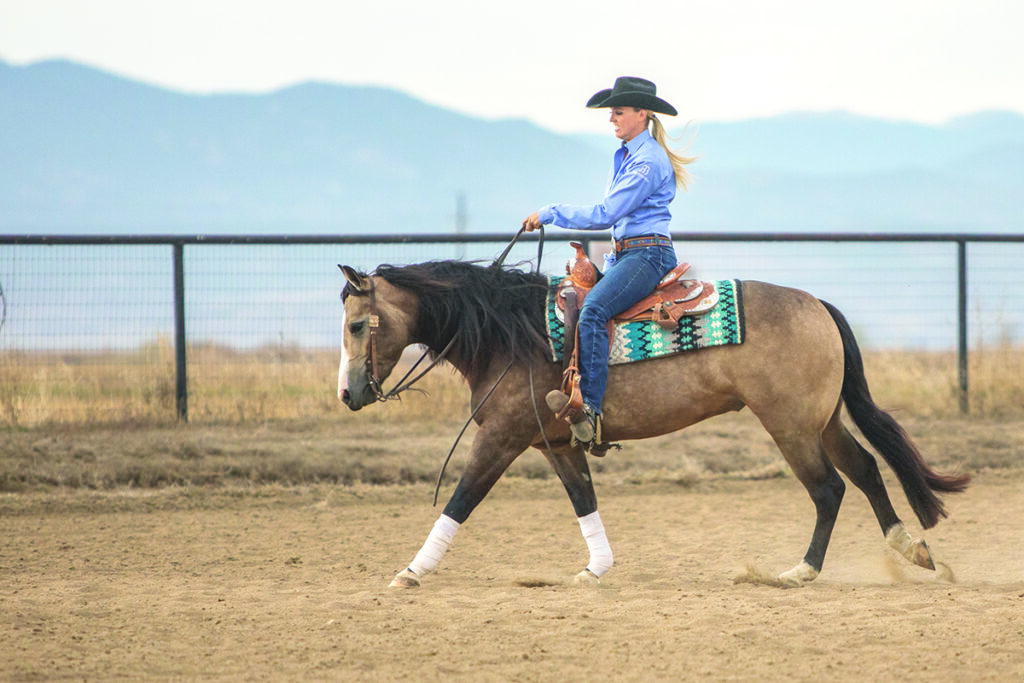
When you practice the oval pattern and mix in some full-stop practice, you’ll remind your horse that you’re the driver and that it’s best to listen to you.
Special thanks to trainer and coach Sharee Schwartzenberger, whose freestyle reining performances have earned her top championship titles. She coaches riders and trains reining horses in Longmont, Colo. Thanks to our horse model, Shineywhippersnapper (“Schmidty”). The 3-year-old finished in the top 15 at the National Reining Horse Association Non Pro Futurity.
This article about horse reining rundowns originally appeared in the September 2021 issue of Horse Illustrated magazine. Click here to subscribe!




